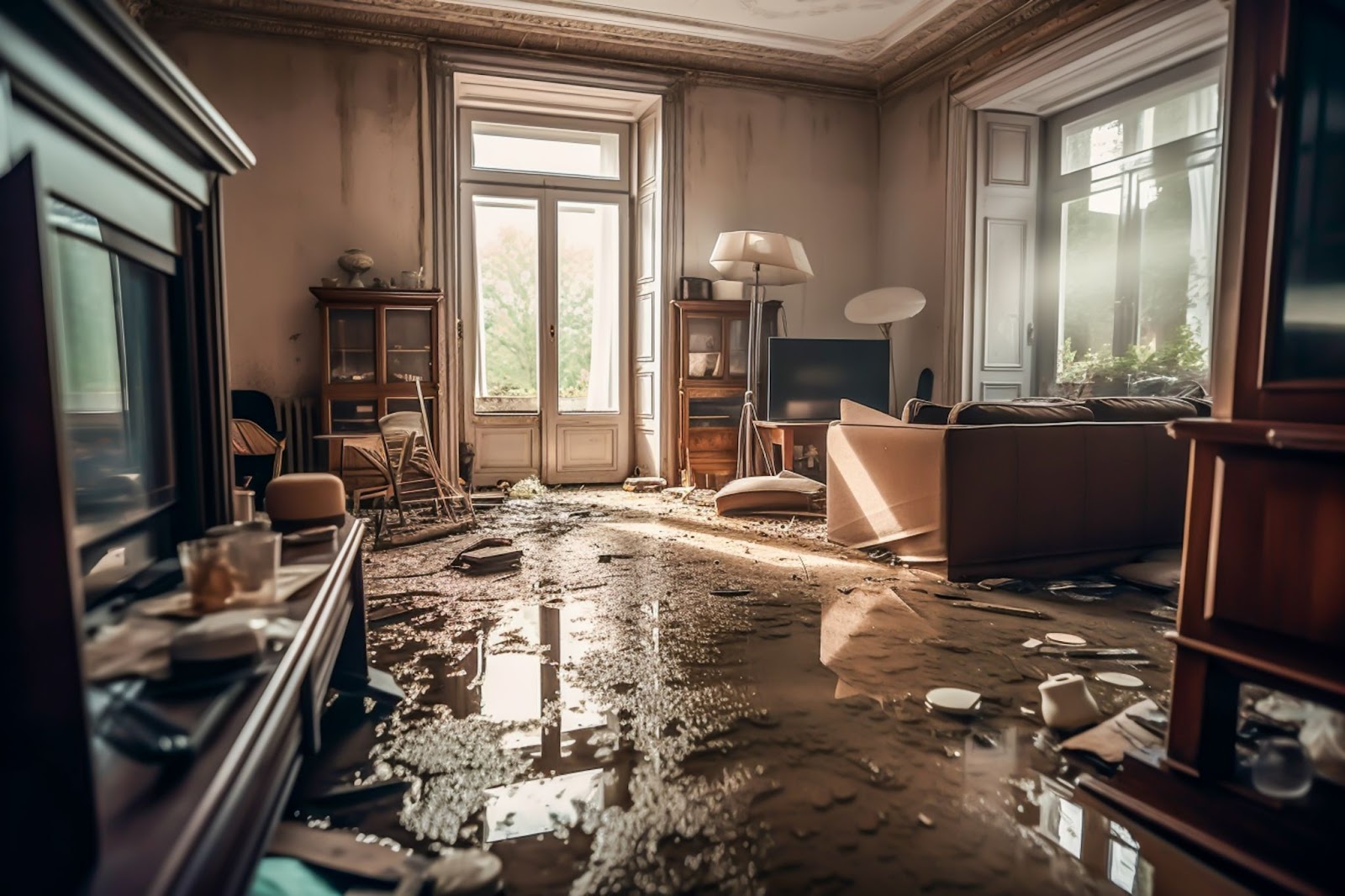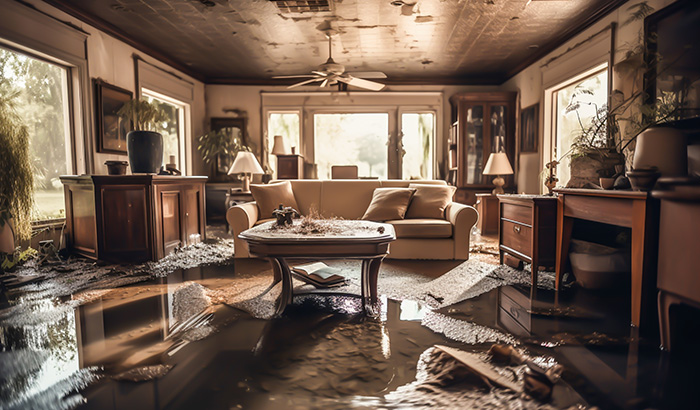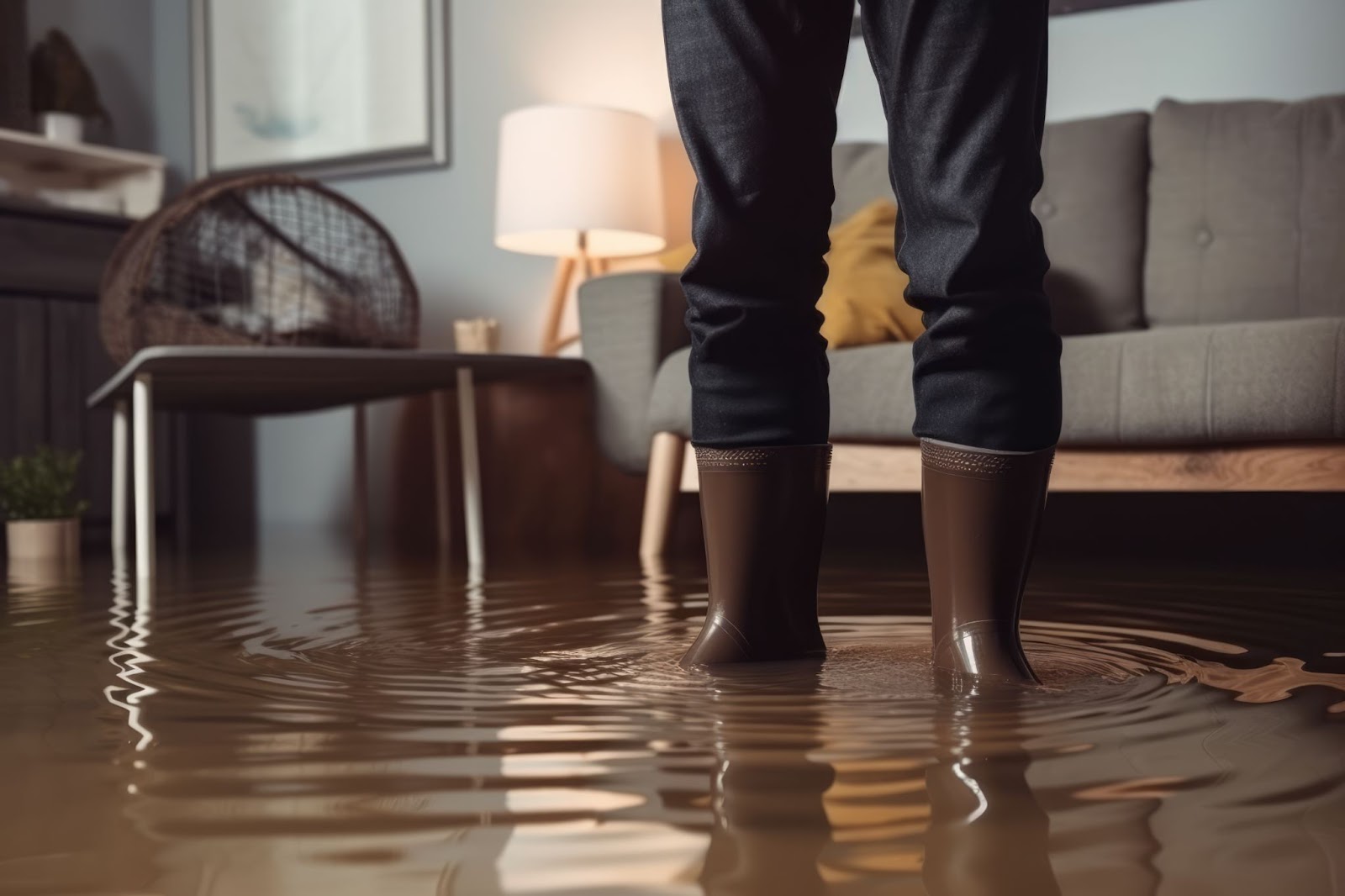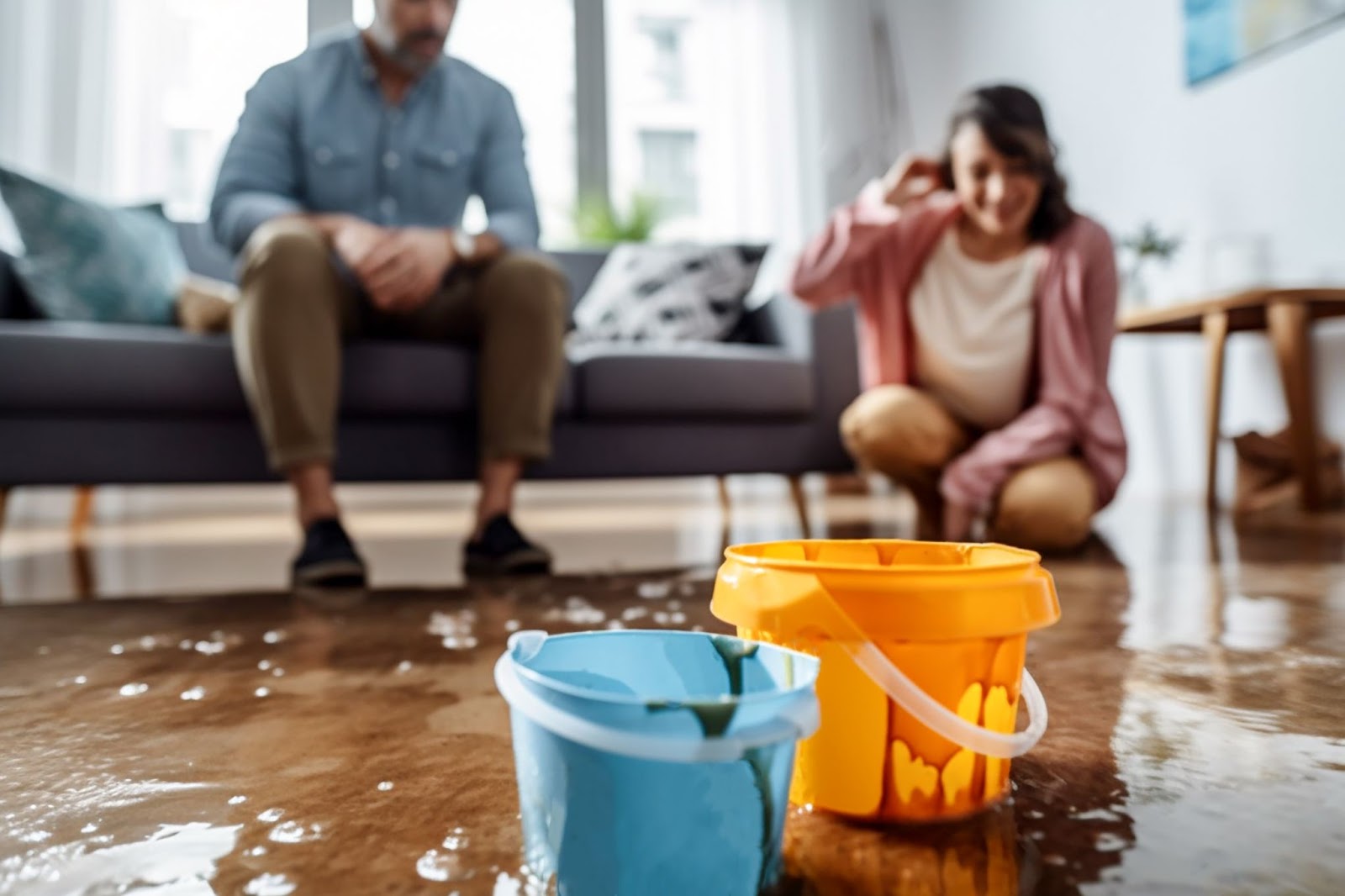In the wake of a home flood, the initial hours are critical for mitigating the impact and setting the stage for recovery. Limit damage, prioritize safety, and accelerate restoration by promptly addressing the situation. Acting swiftly enables you to assess the extent of the damage, document it for insurance purposes, and implement measures to prevent further harm.
Immediate action helps safeguard your health and well-being by minimizing exposure to contaminated water and mold growth. By understanding the importance of swift response and taking proactive steps, you are able to navigate the challenges of a home flood with greater resilience and efficiency.
In this comprehensive guide, we’ll delve into the essential actions to take within the first 24 hours following flooding. From safeguarding personal safety to initiating cleanup and restoration efforts, we’ll equip you with the knowledge and tools needed to navigate this challenging situation effectively.
Let’s dive in and explore the vital steps to take after a home flood.
Safety first
In the critical moments following a home flood, prioritizing safety above all else is paramount. Should your property become inundated and jeopardize your well-being, it’s critical to evacuate promptly to a secure location.
Under no circumstances should you venture into flood waters unless absolutely necessary and deemed safe by authorities. Flood waters can conceal various hazards, including submerged obstacles, electrical currents, and contaminants, posing serious risks to personal safety.
It’s always best to err on the side of caution and heed evacuation advisories. This way, you will safeguard yourself and your loved ones from potential harm amidst the chaos of a home flood.
Additionally, it’s crucial to turn off electricity and gas to prevent potential hazards. Water and electricity are a dangerous combination, so switch off the main power supply at the breaker panel if you are able to do so safely. Shut off the gas supply to avoid the risk of leaks or explosions. Taking these precautions ensures the safety of yourself and your loved ones during this challenging time.

Assess the damage
As you are dealing with the aftermath of a home flood, a comprehensive assessment of the damage is essential. Start by meticulously surveying your property to gauge the full extent of the flooding. Be thorough in your examination, scrutinizing areas prone to water ingress, such as basements, crawl spaces, and ground floors.
Take stock of any standing water, noting its depth and spread and any visible signs of structural compromise or damage. Keep a keen eye out for telltale indicators of mold growth, such as musty odors or discolored patches on walls or ceilings. By conducting a meticulous evaluation, you’ll gain invaluable insights into the scope of the damage and lay the groundwork for effective recovery efforts.
In the aftermath of a home flood, it’s imperative to identify potential hazards and risks that may pose immediate dangers to you and your family. Take a careful inventory of your surroundings and pay close attention to any signs of electrical hazards, such as exposed wires or malfunctioning appliances.
Keep an eye out for gas leaks; most gas leaks are indicated by the smell of gas or hissing sounds near gas lines or appliances. Additionally, be wary of contaminated water, which may harbor harmful bacteria and pathogens.
Exercise caution when inspecting your home; if you encounter any unsafe conditions, refrain from attempting to address them yourself. Your safety is paramount, so don’t hesitate to seek professional assistance. Stay vigilant and proactive to minimize risks and ensure a safer environment for yourself and your loved ones in the wake of a home flood.
Document the damage
Documenting the damage is crucial for insurance claims and restoration efforts. Take detailed photos and videos of the flooded areas, capturing the extent of the water damage, any structural issues, and the condition of your belongings. Be thorough in your documentation, and capture multiple angles and close-up shots where necessary.
Additionally, document any damaged belongings or property, specifically noting the extent of the damage and any items that may be salvageable. This documentation serves as valuable evidence for insurance purposes and helps restoration professionals assess the scope of work needed to restore your home.
Documenting the damage promptly and comprehensively helps to streamline the claims process and expedite the restoration of your property.
Contact your insurance company
After assessing and documenting the damage, promptly notify your insurance provider about the flood and provide them with essential details about the extent of the damage. Be prepared to answer questions about the cause of the flood, the areas affected, and any immediate actions you’ve taken to mitigate further damage.
Understanding your insurance coverage is key, so take the time to review your policy and familiarize yourself with the extent of your coverage for flood damage. Once you’ve notified your insurance company and gathered the necessary information, initiate the claims process as soon as possible.
Your insurer will guide you through the next steps, including scheduling an inspection, assessing the damage, and determining coverage for repairs and restoration. By proactively contacting your insurance company and understanding your coverage, you will be able to navigate the claims process smoothly and expedite the restoration of your home.
Prevent further damage
Following a home flood, swift action is essential to mitigate further damage. Once it’s safe, focus on removing water and moisture from the affected areas promptly. Utilize pumps, wet vacuums, or buckets to efficiently extract standing water from your home.
Pay particular attention to areas prone to water accumulation, such as basements, crawl spaces, and ground floors. Use towels or mops to soak up excess moisture from surfaces and furnishings. This will prevent mold growth, structural damage, and other long-term consequences associated with prolonged exposure to moisture.
Next, focus on drying out the space thoroughly to inhibit mold growth and mitigate additional damage. Increase ventilation by opening windows and doors to promote airflow throughout your home. Supplement this with fans and dehumidifiers strategically placed to accelerate drying.
Concentrate efforts on areas susceptible to retaining moisture, such as carpets, upholstery, and drywall. Regularly monitor humidity levels and adjust ventilation and drying equipment as needed until moisture levels return to normal. This proactive approach helps mitigate the risk of mold proliferation and minimizes the potential for structural deterioration over time.
If you promptly address water and moisture accumulation, you will minimize the risk of structural damage and mold infestation, ultimately speeding up the restoration process and safeguarding your home’s integrity.
Salvage belongings
Possibly the most heart-wrenching part of the flood recovery process is salvaging your belongings. Start by carefully removing any salvageable items from the flooded areas, taking care to prioritize safety and avoid potential hazards.
Once you’ve removed salvageable items from the flooded areas, it’s crucial to thoroughly clean and disinfect each item to prevent mold and bacterial growth.
For porous materials like textiles and upholstered furniture, consider enlisting the expertise of professional cleaning services. They possess specialized equipment and solutions to ensure thorough disinfection and restoration, effectively eliminating any lingering contaminants.
Act swiftly to clean items to thwart the spread of mold and bacteria, safeguarding belongings and health post-flood. Salvaging and treating items promptly not only preserves sentimental items but also minimizes financial losses, easing the emotional toll and expediting restoration.
Secure professional help
After a home flood, seeking professional assistance is crucial for comprehensive cleanup and restoration. Reach out to a reputable restoration company specializing in flood damage. These experts possess the knowledge and tools to assess the extent of damage, devise a thorough restoration strategy, and execute it efficiently.
When you enlist professionals, you secure comprehensive assistance. They adeptly handle tasks like water extraction and structural repairs, ensuring thorough restoration. Their expertise streamlines the process and provides reassurance and guidance, making the recovery journey smoother and less stressful.
Mitigate future flooding
As you move forward from a home flood, it’s essential to take proactive steps to prevent future incidents. Start by identifying the cause of the flood, be it heavy rainfall, plumbing issues, or poor drainage. Understanding the root cause helps tailor preventive strategies, such as installing sump pumps, reinforcing drainage systems, or waterproofing vulnerable areas.
Understanding the root cause empowers you to implement targeted preventive measures. Repairing leaky pipes, installing sump pumps or backflow valves, and enhancing landscaping to redirect water away from your home’s foundation are effective strategies.
Additionally, you may want to consider sealing cracks in walls and floors, elevating appliances and electrical systems, and investing in flood-resistant materials for added protection.
The final step is implementing flood-resistant improvements to your home, such as elevating utilities and appliances above potential flood levels, sealing foundation cracks, and installing flood barriers or seals on doors and windows.
By addressing vulnerabilities and making these enhancements, you can reduce the risk of future floods and protect your home and belongings more effectively.
Take action against flood damage with Total Flood & Fire Restoration
In the aftermath of a home flood, swift action is essential to mitigate damage and begin the restoration process. Total Flood & Fire Restoration is ready anytime — day or night — to assist you with expert cleanup and restoration services. Simply call 385-503-2846, and we will be there.
With our professional guidance and support, you will navigate the challenges of flood recovery with confidence, knowing your home is in capable hands. For any questions or concerns, please reach out to us online.









